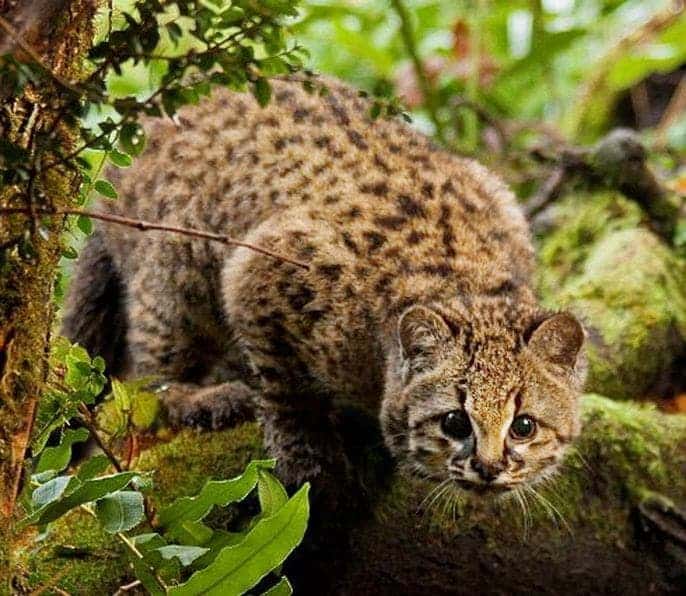The smallest cat in the Americas is struggling under huge pressure as clear-cutting destroyed its habitat and farmers defend their chickens with deadly force.

This being the Internet, cats are in charge. I don’t make the rules, I just report here. So get ready to have your socks blown clean off because today we’re talking about the cutest bit of cat this fair planet has ever spawned: prowling under the name of kodkod or güiña (Leopardus guigna), this is the tiniest cat in the Americas.
Sadly, though, we’re driving them extinct.
Kitten-sized hopes
The güiña wildcat of Chile is also known as the little tiger cat, little spotted cat, or Chilean cat. It’s absolutely as adorable as those names make it out to be, reaching about half of the size of a domestic cat at adulthood. It’s also listed as vulnerable on the IUCN Red List, which shows “a high risk of endangerment in the wild” and is just one step shy of being endangered.
According to the IUCN, there are only about 10,000 individuals left in the wild. It’s got to this point because much of Chile’s tropical rainforests, which form most of the güiña’s habitat, have been chopped down for farmland in the last decades. The tiny feline is also at risk from human persecution over fears that it might hunt livestock.
However, new research led by researchers from the University of Kent, UK, shows the animal is able to survive near human settlements on agricultural land. The biggest threat it faces, the paper reports, is being squeezed out when large farms are broken down into smaller ones.
“This is because there is a higher risk of human interaction and persecution in areas where there are more farms; a greater pressure on natural resources through increased timber extraction and livestock grazing; and even competition for food from domestic animals kept as pets,” said lead author Nicolás Gálvez.
Over the last 25 years, Chile has lost over two-thirds of its temperate rainforests. However, through a combination of questionnaires, camera-trap footage, and remote-sensing data, the team found that this isn’t the main stressor on the güiña — in fact, the felines seem remarkably adaptable to forest loss, and have been seen in pine or eucalyptus plantations or close to agricultural areas.
Surprisingly, large, intensive agricultural areas may actually be suitable for the güiña and shouldn’t be dismissed as poor quality habitat for the species, they add. This is thanks to areas which are left unfarmed and offer refuge, food, and suitable conditions for rearing young.
However, the issues of illegal killings by humans and farm subdivisions go hand-in-hand. Questionnaires revealed that around 10% of rural inhabitants had killed a güiña sometime in the last decade. The cat is viewed in a bad light in such communities, mostly out of fear that it will kill chickens. Large, farms that practice intensive agriculture on wide, open fields do provide adequate environments for the güiña. As farmers break these entities down into smaller farms, they also switch to less intense agriculture and rely more heavily on livestock — setting the stage for a conflict with the tiny carnivores.
“This suggests that persecution is much less of a threat to their survival than the subdivision of farms,” said co-authod Zoe Davies, a professor at the Durrell Institute of Conservation and Ecology (DICE) at the University of Kent.
The findings could be used to better inform conservation efforts and keep the güiña from going extinct. It could also help conservation efforts for other medium-sized carnivores across the world.
The paper “A spatially integrated framework for assessing socioecological drivers of carnivore decline” has been published in the Journal of Applied Ecology.


